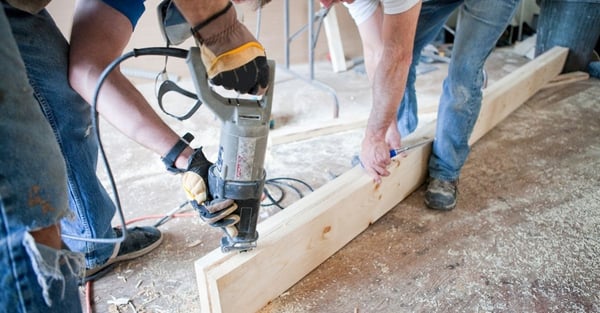If you want to do a home renovation but don’t have the cash available, you’ll need to find another way to finance it. One option is to use your house as collateral and remortgage for home improvements.
How Can You Remortgage for Home Improvements?
You can remortgage for home improvements by taking the amount left on your current mortgage, adding the cost of your home renovation and applying for a new mortgage for the total amount. For example, if you owe £200,000 and your home renovation costs £30,000, you'll need to remortgage for £230,000.
Three factors determine whether you'll be able to borrow more:
- Your current financial circumstances. You’ll have to pass the same checks as when you took out your original mortgage. Lenders will look at your earnings, job security and any debts you have. If your circumstances have changed for the worse, you could find borrowing difficult.
- The amount of equity you own in your home. Basically, the longer you've owned it, the better. If you took out an 80% mortgage but have paid a lot off and now own more than the original 20%, it'll be easier for you to borrow more.
- How much your home has increased in value since you bought it. The more it's gone up, the more borrowing power you have. Bear in mind, though, that a loan is secured against the current value of your house, not its projected one. You can’t borrow against how much it'll be worth after the renovation. Banks will want to know how much the work is going to cost, though, so get estimates from your contractor.
Banks also prefer a safe investment so they will rarely lend you an amount that's too close to the current value. As an example, you stand a good chance of being able to remortgage for £250,000 on a house that's worth £300,000 pre-renovation. Ask for the same amount on a £270,000 property, however, and you may be turned down.

Benefits of Remortgaging for Home Improvements
As well as financing your home renovation, remortgaging can bring other benefits:
- You could get a better interest rate and longer repayment period than a personal loan. Most home improvement or personal loans are paid back over 60-months at most. By contrast, mortgages are longer-term so you spread the cost and have more time to pay it back. Plus, repayments are fixed monthly amounts, so they’re easier to budget for. The amount you can borrow also tends to be more flexible with a mortgage. Bear in mind, though, that you'll probably end up paying more interest overall.
- If you like your area or home, you don’t have to move. If the kids are in a good school, or you can't imagine living anywhere else, it makes sense to invest in your current home than move, especially in an unstable housing market.
- You could increase the value of your home. Home renovations can add value by giving you extra space, updating your home or boosting its kerb appeal. As a rule, creating extra bedrooms or bathrooms is always a good bet. Check out our guides to which home renovations add the most value in the UK vs which don’t before splashing out. However, if you're renovating to sell, talk to an estate agent first. Costly renovations take time to prove their worth, so taking on a bigger debt is a gamble in the short term.
- You could get a better interest rate. If the value of your home has increased rapidly since you bought it, you may now be in a lower loan-to-value band and eligible for better rates. Some lenders also offer ‘green mortgages and favourable rates to make energy-efficient home improvements.
Before remortgaging for home improvements, always shop around and talk to different providers to see whether you can get a better deal by switching to a new one. Do your sums too. Remortgaging for home improvements comes with costs like solicitor's fees and early repayment charges on your current mortgage, if applicable. You're also taking on more debt for longer and rates can rise, so make sure you'll be able to afford it well into the future.
Tags:
Home RenovationAugust 16, 2023





Comments